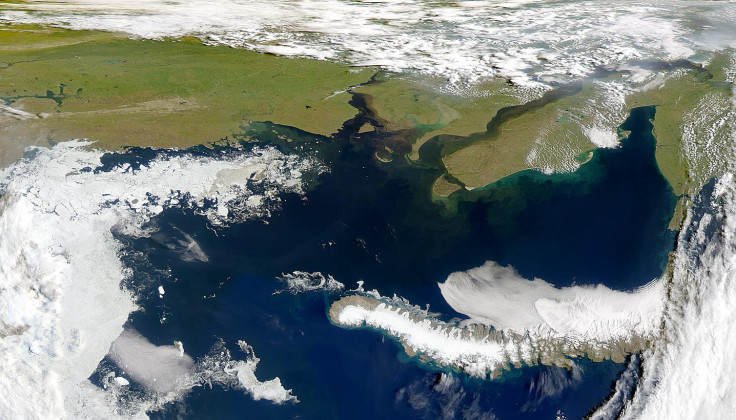Methane 'leaking profusely from offshore permafrost' in Siberia

Scientists are reporting the thawing of ocean permafrost at shallower depths than expected, with potent greenhouse gas methane leaking at depths between 20 and 50 metres in the Kara Sea in the Arctic.
A permafrost seal was believed to exist in the Arctic region, extending to depths of 100 metres and keeping the gas locked underneath. But, the discovery that the West Yamal shelf is leaking profoundly at shallower depths raises fears of a fast thawing permafrost, away from the shore.
Close to the shore the permafrost seal may be a few hundred metres thick, but tapers off towards 20 metres water depth where it is fragile.
Under the two-pronged warming from above and below, the ocean temperature could increase and trigger a total thaw.
While the Earth's internal heat does some bit of warming the waters, global warming adds to the heat.
At temperatures of – 0.5°C, the maximal possible permafrost thickness would likely take 9,000 years to thaw. But if this temperature increases, the process would go much faster.
"The thawing of permafrost on the ocean floor is an ongoing process, likely to be exaggerated by the global warming of the world´s oceans," says Alexei Portnov at the Centre for Arctic Gas Hydrate, Climate and Environment (CAGE) at UiT.
Average ground temperatures are low in Siberia which maintains permafrost down to 600-800 metres ground depth. There have been fears of this thawing as well under global warming.
The Yamal Peninsula in Siberia was in the news recently with a sinkhole appearing out of nowhere due to the thawing of the permafrost.
On the other hand, water temperature in the ocean is warmer and thick permafrost is ruled out.
"However, 20 000 years ago, during the last glacial maximum, the sea level dropped to minus 120 metres. It means that today´s shallow shelf area was land. It was Siberia. And Siberia was frozen. The permafrost on the ocean floor today was established in that period," says Portnov.
Glacial period and after
While ice sheets covered a significant part of the Northern hemisphere during the period, the Yamal Peninsula was not covered with ice, but it was exposed to extremely cold conditions.
When the ice age ended some 12,000 years ago and the climate warmed up the ocean levels increased. Permafrost was submerged under the ocean water, and started its slow thawing.
With cool waters, the permafrost did not thaw completely but now that is changing.
Research presented recently at the annual meeting of the American Geophysical Union suggests that permafrost in some of Alaska's national parks could all but disappear this century.
Permafrost is perennially frozen ground occurring in about 24% of the exposed land surface in the Northern Hemisphere and the Antarctica.
Comprising bedrock, gravel, silt and organic material, a thawing of the permafrost could release much of the carbon and methane in the organic remains into the atmosphere, in a warming feedback loop.
Carbon content
Permafrost contains around 1,700 gigatonnes of carbon in the form of frozen organic matter, almost twice as much carbon as currently in the atmosphere, notes UNEP.
With Arctic and alpine air temperatures expected to increase at roughly twice the global rate and climate projections, a global temperature increase of 3°C means a 6°C increase in the Arctic, resulting in anywhere between 30 to 85% loss of near-surface permafrost.
© Copyright IBTimes 2025. All rights reserved.





















